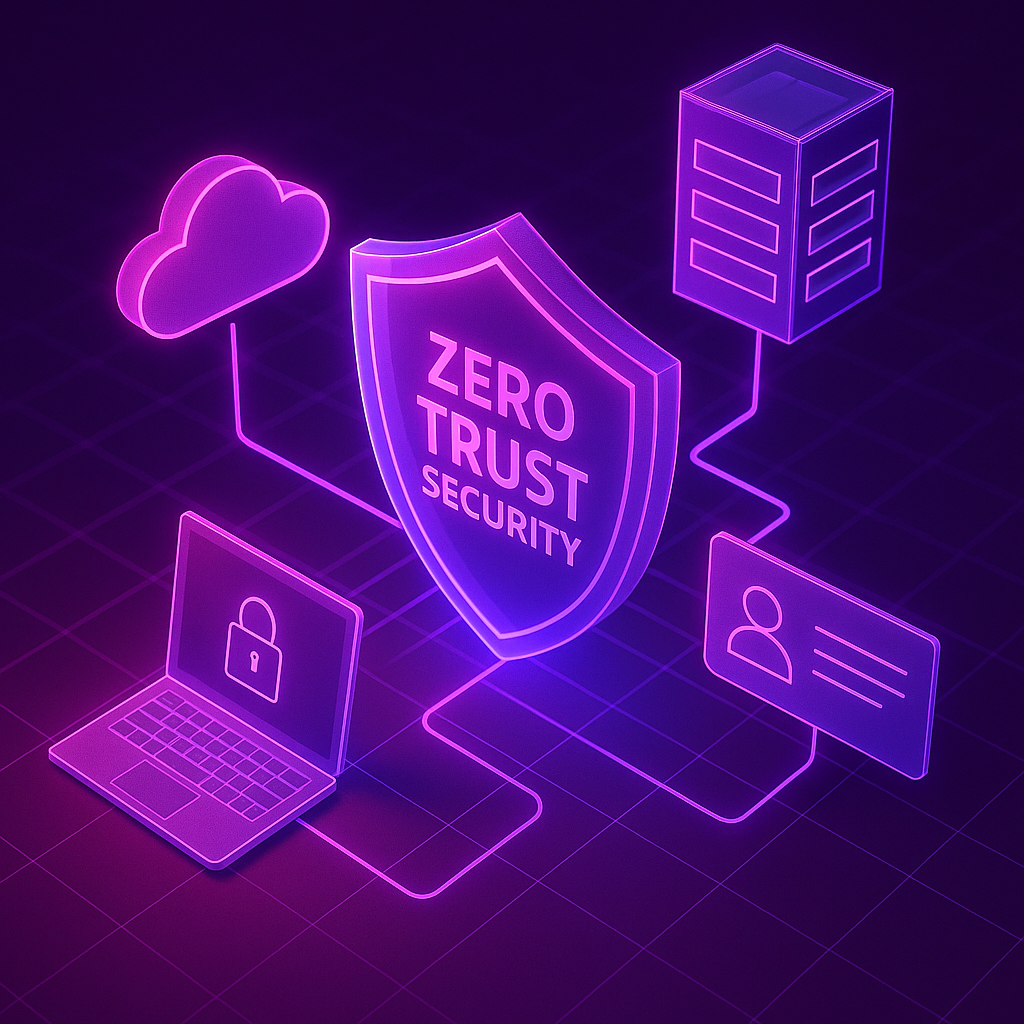In a world where perimeter security is no longer enough, what if your firewall is irrelevant and trust is your biggest vulnerability?
Welcome to NIST SP 800-207, the foundational U.S. federal publication that defines Zero Trust Architecture (ZTA). As cyber threats escalate and remote work becomes the norm, NIST SP 800-207 provides a clear blueprint for rethinking access, identity, and risk. This guide explains what it is, why it matters, and how to implement it—step by step.
What Is NIST SP 800-207?
Published in 2020 by the National Institute of Standards and Technology (NIST), SP 800-207 introduces the Zero Trust Architecture—a security model that assumes no implicit trust regardless of location, credentials, or device. It emphasizes continuous validation of users and assets, strict access control, and real-time monitoring.
Rather than fortify the perimeter, this framework promotes per-session access, least privilege, and constant re-evaluation of trust.
The Seven Core Principles of Zero Trust
NIST SP 800-207 outlines seven tenets that form the philosophical core of Zero Trust:
- All resources are protected—data, apps, services, and networks are equal targets.
- No network location is inherently trusted, whether internal or external.
- Per-request access is mandatory, based on identity, posture, and context.
- Least privilege access must be enforced dynamically.
- Continuous diagnostics and threat detection are essential.
- Access is monitored and logged at all layers.
- Policies must be adaptive, data-driven, and reinforced by telemetry.
These tenets mean organizations must treat every request like it could come from an attacker—because it might.
The Core Components of ZTA
NIST SP 800-207 defines a modular architecture consisting of:
- Policy Engine (PE): Makes decisions about access using policy, risk scores, identity, and telemetry.
- Policy Administrator (PA): Translates the PE’s decision into action (e.g., allow/deny/route).
- Policy Enforcement Point (PEP): Applies access decisions, acting as the “bouncer” between users and services.
- Supporting Infrastructure: Includes identity systems, endpoint detection, PKI, SIEM, telemetry feeds, and threat intelligence.
This structure decouples access decisions from infrastructure, allowing consistent enforcement across hybrid environments.
ZTA Deployment Models in NIST SP 800-207
The standard provides three major reference models:
- Enhanced Identity Governance (EIG): Controls access at the application level via identity providers (IdP), MFA, and SSO.
- Microsegmentation Architecture: Uses host-based agents or SDN to isolate network zones and enforce per-service access.
- Software-Defined Perimeter (SDP): Builds overlay tunnels between authenticated users and services—often used for remote access.
Each model reflects a different level of maturity, complexity, and enforcement granularity. Most real-world implementations use a hybrid of these approaches.
How to Implement NIST SP 800-207: A Phased Strategy
NIST recommends gradual adoption rather than a “big bang.” Here’s a 5-phase model:
- Asset Discovery: Identify users, devices, data flows, and critical services.
- Define Trust Zones: Classify workloads and communication paths by risk.
- Policy Modeling: Write rules based on identity, device posture, risk signals, and application needs.
- Pilot a Small Environment: Start with a low-risk segment or single app group.
- Monitor, Adjust, Expand: Use telemetry to refine policies and scale adoption.
This iterative approach ensures low disruption and maximized visibility.
Mapping ZTA to Real-World Threats
NIST SP 800-207 directly addresses:
- Lateral movement: Prevented by microsegmentation and context-based access.
- Credential theft: Mitigated through MFA, session expiration, and continuous validation.
- Insider threats: Limited by least privilege and behavioral monitoring.
- Supply chain risk: Controlled via software attestation, signed artifacts, and SDLC checks.
Each threat vector is countered through a layered, dynamic control framework.
NIST SP 800-207 vs Traditional Perimeter Security
Feature | Traditional Security | Zero Trust (SP 800-207) |
Trust Model | Trust internal, block external | Trust no one by default |
Access Evaluation | Once at login | Every request/session |
Network Segmentation | Static VLANs, firewalls | Microsegmentation + identity |
Logging & Monitoring | Periodic | Continuous |
User Context | Limited | Identity, device, behavior-aware |
Zero Trust doesn’t eliminate firewalls—it supplements them with identity-first access control and contextual awareness.
Critical Tools and Technologies That Support SP 800-207
Implementing SP 800-207 requires specific capabilities, including:
- Identity Providers (IdPs): Okta, Azure AD, Ping
- MFA & SSO Solutions: Duo, YubiKey, biometric gateways
- Policy Engines: Open Policy Agent (OPA), Styra, Aserto
- Microsegmentation Tools: Illumio, Elisity, Cisco ACI
- Telemetry & SIEM: Splunk, CrowdStrike, Datadog, SentinelOne
- Secrets Management: Vault, AWS Secrets Manager
A successful ZTA stack is interoperable, observable, and scalable.
Challenges and Misconceptions About SP 800-207
Some common misunderstandings:
- “Zero Trust means zero usability” – Not true. Done right, it simplifies access by removing VPNs and unnecessary friction.
- “It’s only for large enterprises” – False. Any org with cloud workloads or remote workers benefits.
- “Zero Trust replaces all existing security” – Incorrect. It complements and extends them.
Challenges include aligning teams, tuning false positives, handling legacy systems, and scaling telemetry ingestion.
Zero Trust Maturity and Continuous Improvement
Zero Trust is not a project—it’s a journey. Maturity is measured by:
Maturity Level | Characteristics |
Basic | Isolated MFA, partial logging |
Intermediate | Role-based access, SIEM alerts |
Advanced | Dynamic, risk-based, context-aware policies |
Optimized | AI-driven enforcement, fully automated remediation |
NIST promotes feedback loops via telemetry to continuously evaluate and evolve policies and enforcement.
SP 800-207 Compliance and Regulatory Alignment
The Zero Trust guidance in SP 800-207 maps well to frameworks like:
- NIST 800-53 Rev. 5
- CMMC 2.0
- ISO/IEC 27001
- CIS Controls v8
- Executive Order 14028
Organizations embracing ZTA through this standard demonstrate strong posture for compliance audits and federal contracting requirements.
TL;DR Box – The Gist in 30 Seconds
- NIST SP 800-207 defines Zero Trust Architecture, where nothing and no one is trusted by default.
- Per-session authentication, dynamic policy, microsegmentation, and continuous telemetry are key.
- Start with asset discovery, model policies, pilot gradually, and improve via data.
- Supports hybrid and multi-cloud, aligning with compliance and risk frameworks.
- ZTA is a strategy, not a product—success depends on architecture, not tool selection alone.





